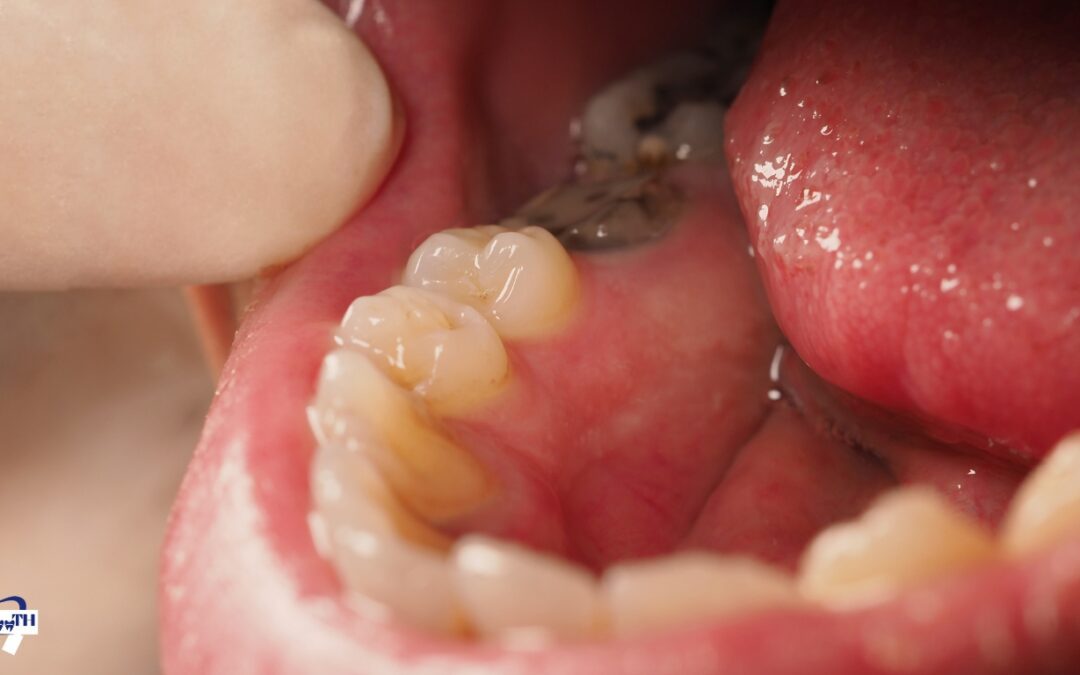Operculum teeth, a fascinating feature found in various species, have long captured the curiosity of scientists and nature enthusiasts alike. From fish to reptiles and invertebrates, these minuscule structures play a crucial role in the survival and adaptation of numerous organisms. In this article, we will delve into the intricate world of operculum, exploring their structures, functions, evolutionary significance, and their diverse manifestations across different species.
Table of Contents
Now, we will discuss about Operculum Teeth in this article.
What is the 10 Functions of Operculum Teeth?
Operculum teeth, though often small in size, play pivotal roles in the survival and functionality of various organisms. These tiny structures, located in the operculum region of different species, serve a diverse array of functions that are integral to the daily lives of these organisms.
First and foremost, operculum are crucial for feeding. Depending on the species, these teeth are adapted to specific dietary needs, aiding in tasks such as grasping, tearing, or crushing food. In fish, for example, operculum teeth are finely tuned for capturing prey and facilitating efficient feeding in aquatic environments. The varied shapes and arrangements of these teeth reflect the specialized diets and ecological niches of the organisms possessing them.

Beyond feeding, operculum contribute to the overall survival strategies of organisms. In some cases, these teeth serve as defensive mechanisms, deterring potential predators or providing a means of protection. The adaptability of operculum is evident in their ability to evolve and meet the challenges presented by different environments, ensuring the continued success of the species.
Moreover, operculum often play roles in communication and social interactions among individuals of the same species. Whether it’s through displays of dominance or establishing hierarchies, these teeth can convey important information that aids in the cohesion and organization of social groups. In case of missing teeth we find this method.
What is the Human Interaction with Operculum Teeth?
Human interaction with operculum has a rich historical and cultural context. In various societies, operculum have been utilized for traditional practices, symbolic rituals, or even adornment. The cultural significance of these teeth varies, with some communities considering them as talismans or charms believed to bring good luck or ward off evil.
In contemporary times, ethical considerations play a pivotal role in human interaction with operculum teeth. Conservation efforts are increasingly emphasizing responsible stewardship to ensure the preservation of species possessing these unique dental structures. The trade and use of operculum teeth in jewelry or traditional medicine raise questions about sustainability and its impact on ecosystems.
As awareness grows regarding the importance of preserving biodiversity, there is a shift towards appreciating teeth within a broader ecological and ethical framework. Balancing cultural heritage with conservation efforts becomes crucial to fostering a harmonious relationship between humans and the fascinating world of operculum teeth.
Operculum Wisdom Tooth Pain
Operculum wisdom teeth pain refers to the discomfort and irritation caused by the operculum, a flap of gum tissue covering partially erupted wisdom teeth. Wisdom teeth, also known as third molars, typically emerge in the late teens or early twenties, and the operculum is a protective tissue that partially encases the tooth during its eruption. While the operculum serves a crucial role in shielding the developing tooth, it can sometimes lead to pain and complications.
The pain associated with operculum wisdom tooth issues often arises when the operculum becomes inflamed or infected. This can occur due to factors such as inadequate oral hygiene, causing bacteria to accumulate and lead to gum inflammation. As the wisdom tooth attempts to emerge, the operculum may not fully recede, creating a pocket where food particles and bacteria can get trapped, resulting in pain and potential infection.

Common symptoms of operculum wisdom tooth pain include swelling, tenderness, and difficulty in fully opening the mouth. The discomfort can range from a dull ache to sharp, throbbing pain, impacting daily activities such as eating and speaking. It is essential to address operculum wisdom tooth pain promptly to prevent further complications, including the development of an abscess.
Dental professionals often recommend maintaining good oral hygiene, including regular brushing and flossing, to alleviate operculum wisdom tooth pain. In more severe cases, where infection or impaction occurs, a dentist may suggest the removal of the operculum or the wisdom tooth itself. Seeking timely dental care is crucial to managing operculum wisdom tooth pain and ensuring optimal oral health.
Does operculum go away?
The fate of the operculum, a protective flap covering the gills in many aquatic organisms, is a subject of interest and curiosity. As these organisms mature, the operculum undergoes significant changes, and in some cases, it may seemingly “go away.” This process is often part of the natural development and life cycle of the organism.
In fish, for instance, the operculum is crucial for respiratory functions during the early stages of life. As the fish grows and transitions to more advanced life stages, the operculum undergoes modifications. In some species, the operculum becomes less prominent or even appears to disappear entirely. This transformation is an inherent aspect of the organism’s adaptation to its changing environment and lifestyle.
It’s important to note that the operculum’s apparent disappearance does not mean it ceases to serve a purpose. Instead, it reflects the organism’s evolutionary and developmental adjustments. Understanding the dynamics of the operculum throughout an organism’s life provides valuable insights into the intricacies of its biology and underscores the adaptability of these remarkable creatures in aquatic ecosystems.
What is the Operculum Tooth Treatment?
Operculum treatment involves addressing issues related to the operculum, a protective flap of tissue often associated with the eruption of molars, especially in the context of wisdom teeth. When the operculum fails to recede properly, it can lead to various dental problems, including pain, inflammation, and increased susceptibility to infections. Here’s a brief overview of operculum tooth treatment:
One common approach to managing operculum-related concerns is through careful oral hygiene practices. Dentists may recommend thorough and gentle brushing and flossing around the affected area to prevent the accumulation of bacteria and debris. Additionally, the use of antiseptic mouthwashes can aid in maintaining a clean and infection-free environment.

In cases where the operculum causes persistent discomfort or becomes inflamed, dentists might suggest anti-inflammatory medications to alleviate pain and reduce swelling. For more severe cases, a surgical intervention known as operculectomy may be considered. Operculectomy involves the removal or reshaping of the operculum to enhance oral health and prevent future issues.
Dental professionals closely monitor operculum tooth treatment, ensuring personalized care based on the severity of the condition. Regular check-ups enable early detection of potential problems, allowing for prompt intervention and preventing complications.
Operculum after Wisdom Teeth Removal
After the removal of wisdom teeth, a crucial part of post-operative care involves the management and care of the operculum. The operculum refers to the flap of gum tissue that commonly covers the partially erupted wisdom tooth. In many cases, during the extraction procedure, the dentist or oral surgeon may need to remove or reshape this operculum to access and extract the wisdom tooth fully.
Post-Operative Care for the Operculum:
Following wisdom teeth removal, proper care of the operculum is essential to ensure optimal healing and reduce the risk of complications. Dentists typically provide detailed instructions to patients to facilitate a smooth recovery process.
Practice Gentle Oral Hygiene:
While the surgical site heals, maintaining oral hygiene is crucial. Patients are often instructed to rinse their mouths with a saltwater solution gently and to brush their teeth carefully, avoiding direct contact with the operculum.
Avoid Irritation:
Chewing on the side of the mouth where the operculum was removed should be minimized to prevent irritation. Soft and cool foods are recommended during the initial days of recovery.

Use Prescribed Medications:
Pain management and the prevention of infection are critical aspects of post-operative care. Dentists may prescribe pain relievers and antibiotics to aid in the healing process.
Attend Follow-Up Appointments:
It is imperative to schedule follow-up appointments with the dentist in order to track the healing process. Any signs of infection, unusual swelling, or persistent discomfort should be promptly addressed during these visits.
Conclusion
In conclusion, operculum serve as nature’s tiny marvels, showcasing the incredible diversity and adaptability of life on Earth. From their structural variations to their vital functions, operculum offer a glimpse into the intricate web of evolutionary processes and ecological relationships. As we continue to unravel the mysteries of operculum teeth, we gain a deeper appreciation for the wonders of the natural world.
FAQs
Q: Are operculum teeth present in all species?
A: Operculum teeth are not universal; their presence varies across species. While common in certain groups like fish, reptiles, and invertebrates, many species lack operculum teeth altogether.
Q: Do operculum teeth play a role in the survival of the organisms possessing them?
A: Operculum teeth are vital for the survival of organisms, contributing to feeding and defensive mechanisms. These adaptive structures enhance the organism’s ability to thrive in its environment.
Q: How do operculum teeth adapt to environmental changes?
A: Operculum teeth exhibit remarkable adaptability by undergoing structural modifications in response to environmental changes, ensuring the survival and functionality of the organisms possessing them.
Q: Are operculum teeth a subject of ongoing scientific research?
A: Operculum teeth are a subject of continuous scientific exploration. Ongoing research delves into their genetic and physiological aspects, unraveling mysteries and enhancing our understanding of these intricate structures.
Q: What can be done to conserve operculum teeth in threatened species?
A: Conserving operculum teeth in threatened species involves addressing environmental threats like habitat destruction and pollution. Implementing protective measures and promoting responsible stewardship are crucial for preservation

